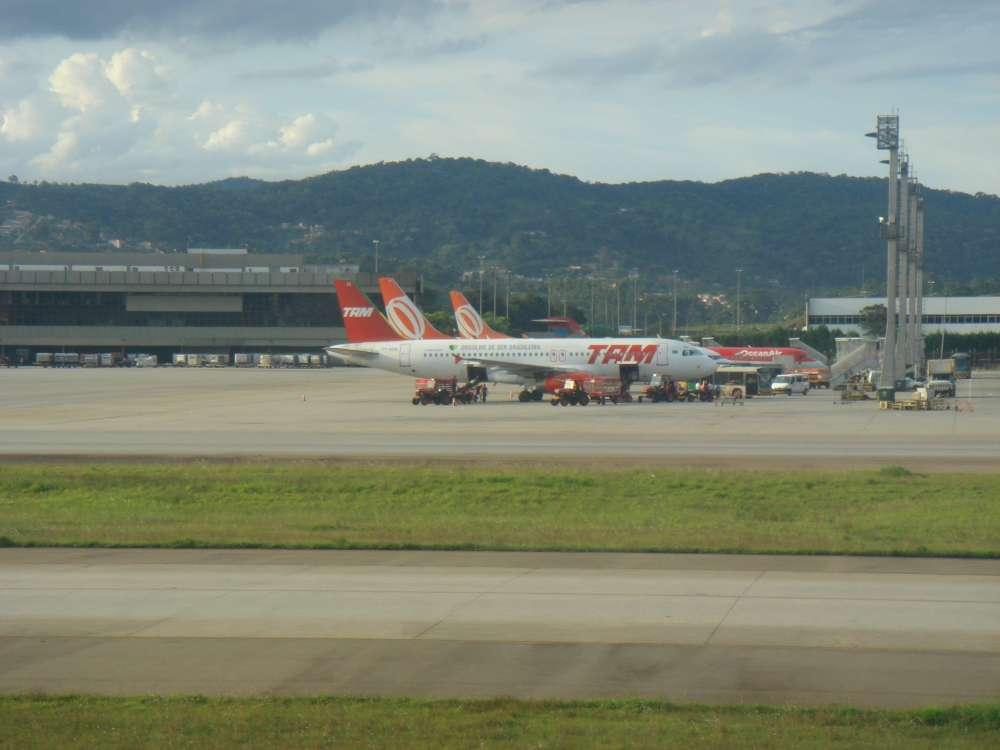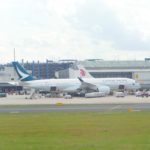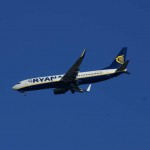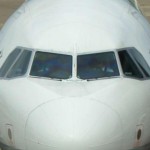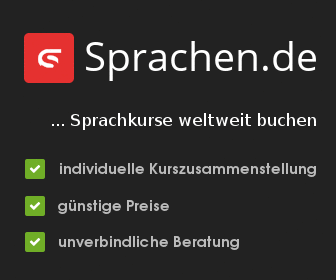The Brazilian airline company successfully pioneered the low-cost and low-fare model in Brazil, popularizing air transport
São Paulo – On Saturday, January 15, GOL Linhas Aéreas Inteligentes S.A. (BM&FBovespa: GOLL4 and NYSE: GOL), (S&P/Fitch: BB-/BB-, Moody`s: Ba3), the largest low-cost and low-fare airline in Latin America, completed ten years of regular operations, during which the it expanded its operational fleet from six to 112 aircraft, achieving a Brazilian market share of close to 40% and establishing itself as one of the most profitable and fastest-growing airlines in the world.
“GOL was founded in 2001 with the mission of popularizing air transport in Brazil and South America. Thanks to the dedicated efforts of our almost 19,000 strong workforce and highly efficient management, we have been extremely successful with our strategy of profitable and sustainable growth, based on a low-cost structure with high quality customer service”, declared Constantino de Oliveira Junior, GOL’s CEO and founder. “This business model, successfully implemented by GOL for the first time in Brazil, has allowed us to offer lower fares, making air travel increasingly accessible to all.”
Since it began its flights, GOL has established several important landmarks in Brazil’s commercial aviation sector. It was the first airline to eliminate traditional paper tickets, thereby reducing costs and simplifying customers’ travel experience, the first to allow passengers to check-in entirely by cell phone and the first to permit check-in on domestic flights via iPhone for passengers without accompanying baggage. GOL also launched the buy on board service, which proved extremely popular with the public and will be expanded to more than 400 daily flights in 2011, helping boost ancillary revenue.
GOL also moved into entirely new territory by opening up the aviation market to the middle class for the first time on a large scale. In just ten years, the airline has transported more than 160.5 million passengers, around 10% of whom first-time flyers. Through GOLLOG, its cargo transport unit, GOL also made delivery charges more accessible, including for express deliveries.
“Right from the beginning, we have undertaken research to discover the habits, taste and wishes of consumers from this emerging middle class in regard to air travel. The company came into being already studying their behavior, listening to their needs and designing products to meet them. In 2005, for example, we launched Voe Fácil, a program that allows passengers top pay for their tickets in up to 36 installments,” remembers Claudia Pagnano, GOL’s Vice-President of Market. “Our brand is regarded as being synonymous with accessibility. We were the first to launch creative promotions and we have maintained our commitment to offering prices that are competitive with those charged by the bus companies.”
Within this growth strategy, certain decisions were key in ensuring the success of GOL’s strategy: (i) operating a standardized fleet of Boeing 737 Next Generation aircraft, thereby reducing costs and ensuring high utilization ratios; (ii) using the internet as the primary sales channel, not only for final customers, but also for travel agencies; (iii) focusing on innovation and technology to leverage results and efficiency; and (iv) having a highly efficient and motivated team to ensure excellent service quality.
“Innovation really is the secret of GOL’s success and its low-cost structure and high growth rates are due to a continuous process of reinvention and the pursuit of higher productivity, quality, safety and intelligence in the company’s processes and areas of activity,” explained Ricardo Khauaja, GOL’s Vice-President of Management and Personnel.
Adalberto Bogsan, Vice-President Technical, underlines the importance of the Boeing 737-700 and 737-800 Next Generation fleet to GOL’s operations: “With their low operating costs, these aircraft play a vital role in the company’s strategy of popularizing air transport. We have one of the best daily utilization rates in the world and we offer our passengers both safety and comfort”, he declared. “In the last ten years, we have a lot to be proud of: under GOL’s specifications, Boeing developed and delivered, in 2006, the Short Field Performance model, specially projected to operate on the runways of Congonhas (São Paulo) and Santos Dumont (Rio de Janeiro) airports. As a result, we gained even more competitive advantages.”
Another motive for pride is the Aircraft Maintenance Center which GOL built in the Lagoa Santa area, in Confins, the biggest and most advanced in Latin America. In addition to ensuring the safety of the company’s fleet, the center complies with all prevailing environmental legislation and licensing conditions, being equipped with an advanced Chemical Effluent Treatment Station ETE). Currently seeking ratification by the Federal Aviation Administration (FAA), the U.S. civil aviation regulatory agency, GOL will soon be able to undertake maintenance for international airlines as well.
One of the most important landmarks in GOL’s history was the March 2007 acquisition of VRG Linhas Aéreas, which allowed the company to increase its market presence and operate most flights in Brazil’s busiest airports, such as Congonhas (São Paulo), Santos Dumont (Rio de Janeiro), Juscelino Kubitschek (Brasília), and Confins (Belo Horizonte). The routes between these airports are among GOL’s most profitable, with the highest yields, chiefly due to the business travel segment. Today, GOL’s consolidated route network is the most extensive in Latin America, with approximately 900 daily flights to destinations in South America and the Caribbean.
SMILES, which GOL acquired with VRG, has become a major relationship tool. It is one of the most complete frequent flyer programs that exist with over 7.4 million registered participants and more than 180 partners, including hotel chains, car-rental firms, restaurants, publishers, schools and some of the biggest banks in Brazil and South America, as well as credit card companies. Through this program, GOL customers can accumulate miles and issue tickets throughout the entire world, thanks to commercial agreements with leading foreign airlines, including American Airlines, Delta Air Lines, Air France and KLM – the route leaders between Brazil and their respective countries.
In a few years, GOL has become a strong and mature company, in the forefront in all senses, including corporate governance,” said Leonardo Pereira, Vice-President and CFO. Our business is conducted in accordance with the best practices of corporate governance adopted in Brazil and throughout the world and we always seek to anticipate new tendencies and requirements. One such example was the publication of our results in line with IFRS standards as early as the fourth quarter of 2008. We were one of the first companies in Brazil to do this.”
With shares traded on the Level 2 Special Corporate Governance Standards segment of the BM&FBOVESPA (Securities, Commodities and Futures Exchange) and on the NYSE since 2004, GOL ensures transparent accountability to investors and shareholders through governance policies and management instruments that are aligned with the regulations of the SEC and the CVM (Brazilian Securities and Exchange Commission). And it is now the profitable airline operating in Brazil in the last 12 months and the most profitable among Latin America’s low-cost airlines.
Looking to the future, GOL continues to assess opportunities for expanding its operations, launching new flights in Brazil and to other high-traffic international destinations and creating pioneering products and services. Given that at least 100 million Brazilians currently have the financial conditions to fly but have not yet done so, we believe that the aviation market has enormous room for growth in the coming years.
Picture: Edgar Delmont
